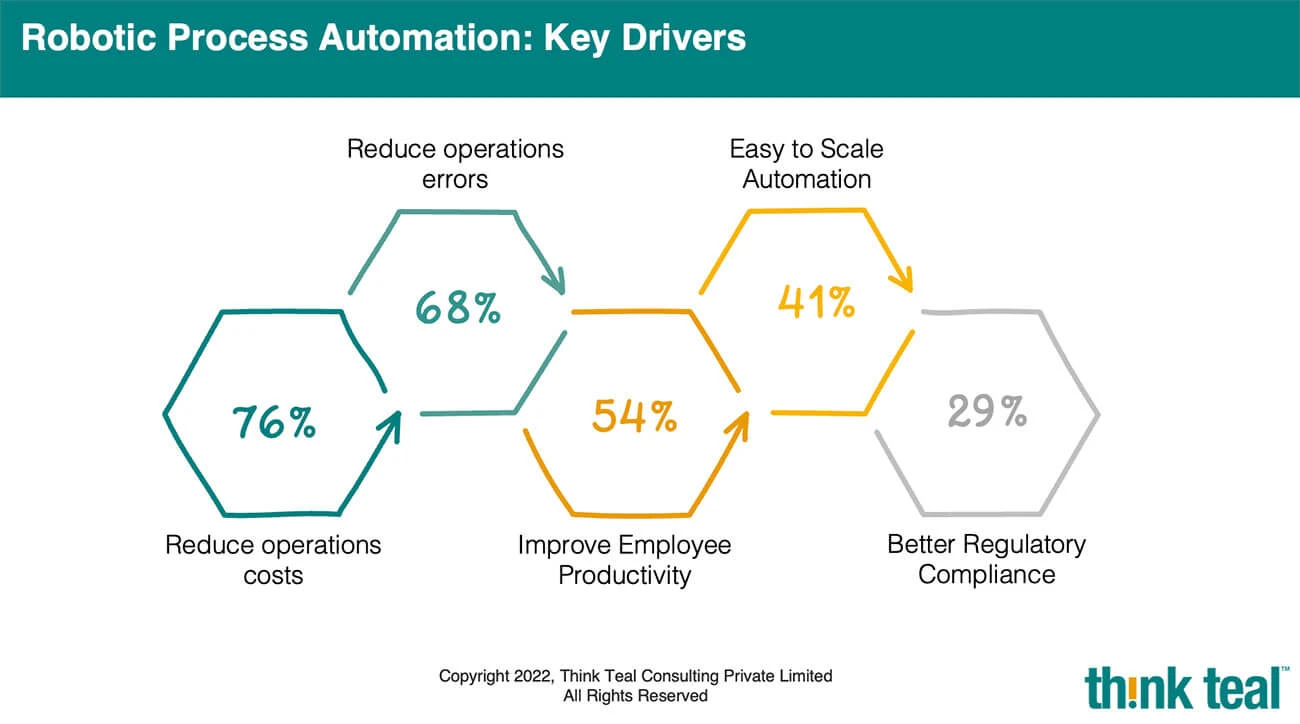Robotic Process Automation: Key Drivers
Process automation has long been a central theme when an organization takes up any digital transformation initiative. While the entire premise of RPA freeing up their human counterparts to do the mundane, repetitive tasks is quite well known, adopting any new technology is also dependent on various other factors like cost, ease of deployment etc. Let us evaluate where RPA stands vis a vis some of these key parameters.
- Reduced Cost: Typical RPA deployments don’t require heavy investments in terms of infrastructure setup as compared to large-scale ERP deployments.
- Integration with legacy systems: RPA agents can access and pull information from any system or application, enabling organizations to streamline usage of legacy systems/applications without heavy IT involvement, such as integration or coding.
- Increased Security: RPA robots are virtual; they increase security when processing sensitive tasks or handling confidential information. They can be used to gather/change data in places that live agents don‘t have access.
- Reduced Reliance on IT: Since RPA robots are virtual, they increase security when processing sensitive tasks or handling confidential information. They can be used to gather/change data in places that live agents don‘t have access. In addition, enterprises should try to extract maximum value from their RPA solutions by focusing on the insights that can be pulled as an outcome.
- Improve Data Analytics: Track and monitor all automated tasks and capture related data which can be analyzed to make better business decisions.
- Revenue enhancement: Shorter cycle time to service customers resulting in increased revenue growth.


